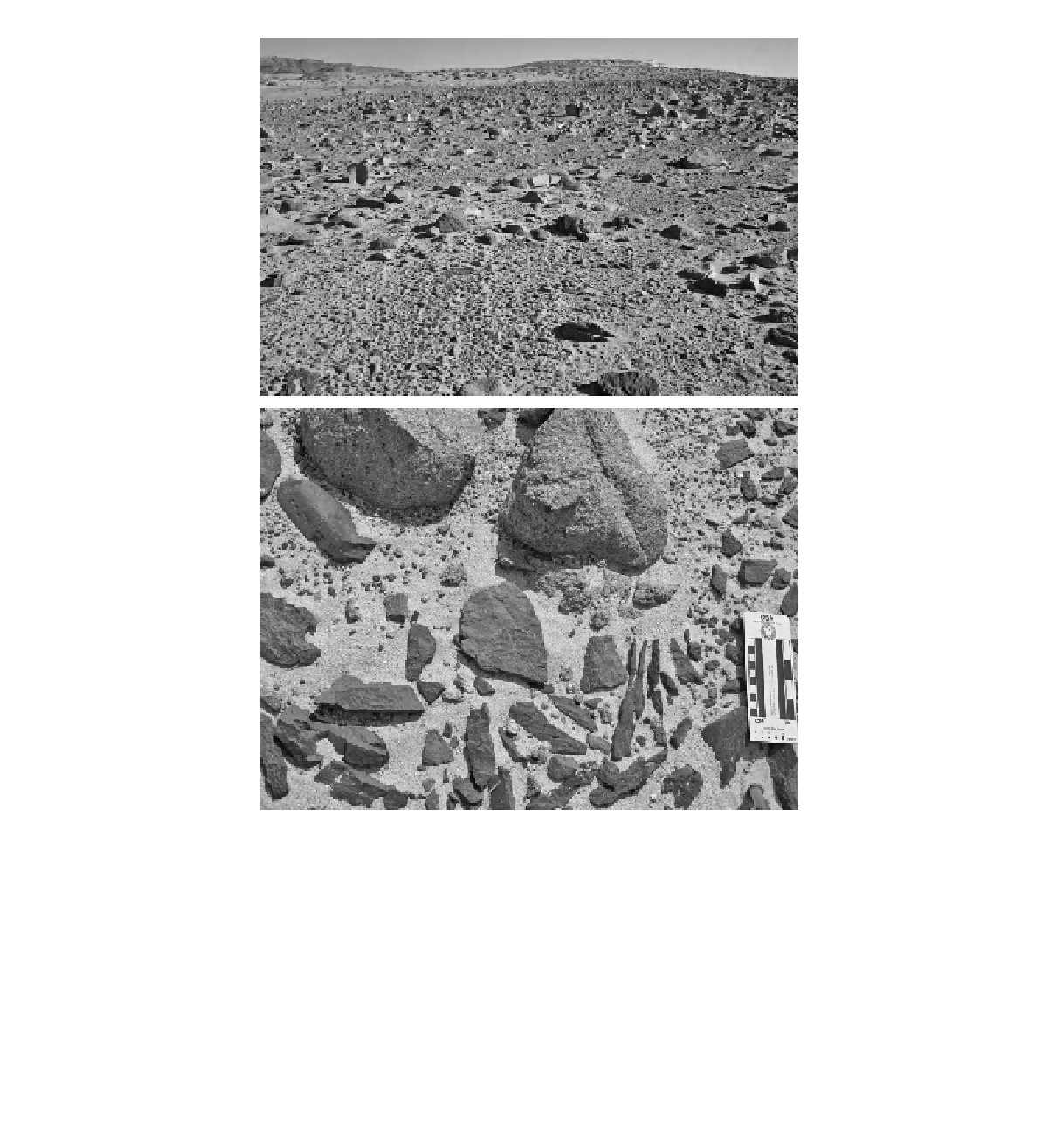Geoscience Reference
In-Depth Information
(a)
(b)
Figure 9.5
(a
)
This surface shows the transition from a hamada to a pavement south of Owens Lake, California. Many weathered
and wind-abraded boulders remain amid surface pebbles whose clast cover ranges from
∼
50 to 70 %. (b) Salts blown in from the
exposed saline surface of Owens Lake are actively weathering the rocks shown in Figure 9.5(a). The granular disintegration of
granites (upper two large rocks) and the angular splitting of fine-grained rocks (darker material) result in smaller clasts, which
over time may form an interlocking pavement.
9.3.3
Upward migration of stones
the stones are displaced upwards to the surface. This pro-
cess is believed to be significant in the stony tablelands of
Australia (Jessup, 1960; Twidale, 1994; Thomas, Clarke
and Pain, 2005). Laboratory experiments indicate that al-
though some upward movement of particles is possible,
partial burial may occur also by displacement (Cooke,
1970).
The upward migration of gravel is potentially less ef-
fective in other geographic regions. In the Mojave Desert,
The absence of stones beneath a desert pavement has been
accounted for by an upward migration of gravel through a
clay-rich B-horizon via alternating shrinking and swelling
associated with wetting and drying and/or freezing and
thawing (Springer, 1958; Jessup, 1960; Cooke, 1970;
Mabbutt, 1977). Soils that exhibit shrink-swell tenden-
cies contain expansive clays and swell and heave on wet-

